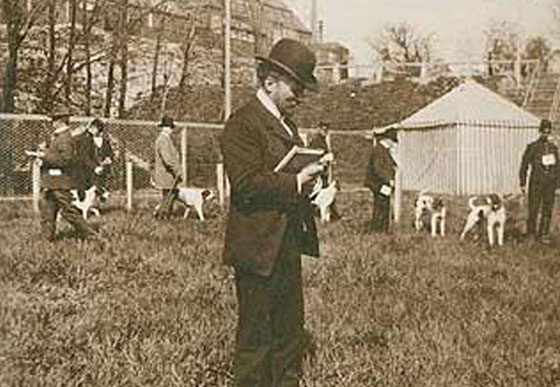
We wanted to learn more about William Arkwright because he was influential in one of our sporting breeds, so we did a little digging.
We learned that William Arkwright was a citizen of Sunvale, Yarmouth. He had dreams of becoming a writer, so it was natural that he was a scholarly student and a collector of ancient literature, novels, and plays. A gentle young man, William had suspicions about Reverend Daniel Becket (wait, who???) and that he had warned Nymue (who the heck is Nymue???) about getting too close to the charismatic priest. Nymue did indeed discover that the Reverend was a murderous dhampir. Huh?
Here was when we did this:

We soldiered on. The Reverend threatened Nymue into fleeing the city forcing her to leave her friend and romantic interest behind and William’s status became unknown but years later Nymue would finally attempt to contact him through a letter delivered by Reverend Karl Quint upon his return to Sunvale after being shipwrecked on the island of Krakengärd for several years.
Note to self: Pay better attention to the site you’re visiting for information. This William Arkwright turned out to be a character from the dark fantasy/horror Pathfinder campaign, Dead Evil.
The William Arkwright we wanted was born in 1857 to Major William Arkwright and Fanny Susan Thornewill. When he was 27 years old, he married Agnes, the daughter of the Hon. John James Thomas Somers Cocks who’d been granted a peerage by Royal Warrant.
We don’t know much more about William beyond his serious interest in breeding dogs. He spent years researching different breeds, training patterns, and detailed illustrations, and maintained an avid hunting lifestyle with Agnes for many years. He developed a particular fascination with Pointers, and indeed, his black English Pointers would come to be famous. Before he passed away in 1925 at the age of sixty-seven in Devon, England, William compiled, “Arkwright on Pointers” which many Pointer fanciers still consider to be the bible on the breed. His “The Pointer and his Predecessors” is considered one of the best early histories of the Pointer, in no small part because of the considerable money and time he spent searching continental archives.
When William visited Sweden in 1903, he judged Pointers at the Stockholm exhibition. He did not emerge out of life without a bit of controversy, however. In those days, early breeders in England believed that a Pointer’s tail told a lot about the dog. Short tails suggested pure bloodlines, but when there were outcrosses to greyhound or foxhound, the tails were longer, and even then, they were still back-level or lower. In 1895, William speculated about a particular Pointer’s ancestry and suggested that it had “alien blood.” The problem was that William did it in print. He was vilified and threatened with lawsuits, but in the end, William was vindicated by verification that the dog’s breeder “obtained the services of the late Lord Portsmouth’s staunchest foxhounds, and had introduced the strain into his kennel of pointers.”
Point to William.
History treats William well. Of Arkwright, the American Pointer Club wrote: “It was during the early mid-part of the 20th Century in the U. S. that the diversion in field and bench types became apparent. With our wide open spaces, many Americans wanted a wider ranging and faster running dog with the tail held high. It is here the bench people came to agree with William Arkwright as he states, ‘There is nothing for a pointer more necessary than a tail of the right shape, of the right length, of the right carriage and of the right covering.’ Today we acknowledge both by holding our National Specialty and National Field Trial Championship. We now see Pointers that are able to compete in both competitions.
Rest in Peace, William. Meanwhile in another realm, William Arkwright, Reverend Daniel Becket, and Nymue are carrying on.
Image: We know little about this image beyond that it is of William Arkwright, and we suspect it was taken during his judging assignment in Sweden.
